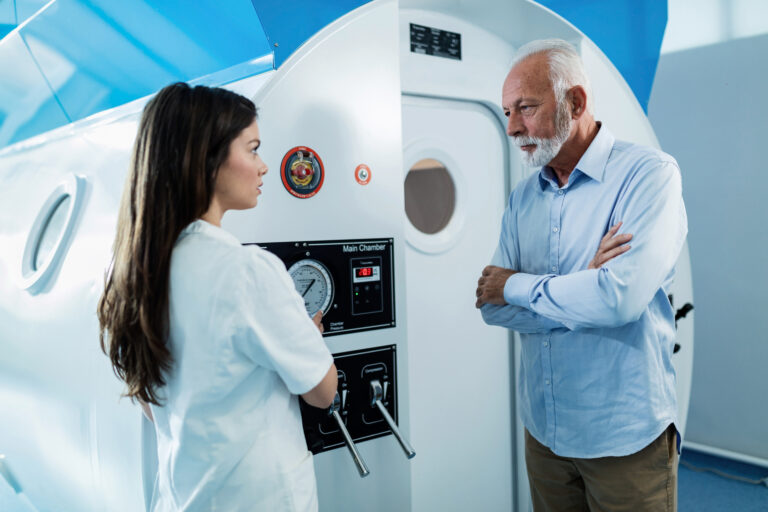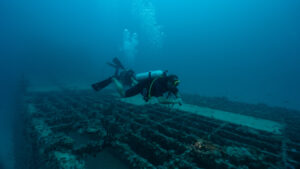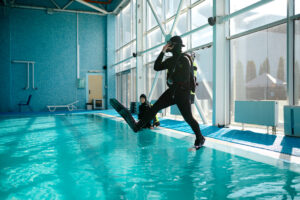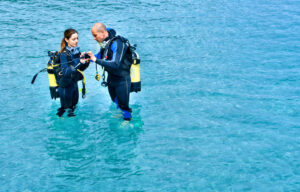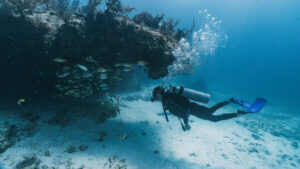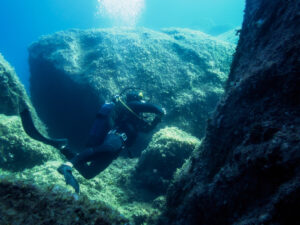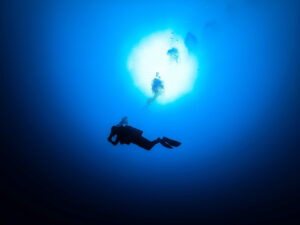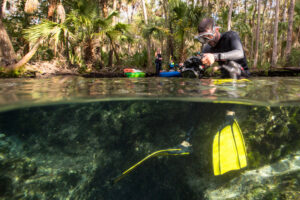What is a Decompression Chamber?
A decompression chamber, also known as a hyperbaric chamber, is a large cylindrical tube designed to facilitate the gradual adjustment of deep-sea divers to normal air pressure. This essential piece of equipment is widely used in the scuba diving community and medical facilities to mitigate the risk of decompression sickness, also known as “the bends,” by allowing divers to acclimatize to atmospheric pressure changes in a controlled environment.
History of the Decompression Chamber
The concept of a decompression chamber dates back to the early 20th century when British physician Sir Leonard Hill and French scientist Paul Bert independently studied the effects of pressure changes on the human body. Their research laid the foundation for the development of decompression chambers, which gained prominence in the diving and medical communities in the mid-20th century.
Decompression Sickness
Decompression sickness is a potentially fatal condition that can occur when a diver ascends too quickly from depth, resulting in the formation of gas bubbles in the blood and tissues. This can lead to severe joint pain, paralysis, and even death. Decompression chambers help divers avoid these risks by providing a controlled environment where air pressure can be gradually reduced, allowing the body to off-gas nitrogen and other dissolved gases at a safe rate.
Types of Decompression Chambers
There are two primary types of decompression chambers: monoplace and multiplace. Monoplace chambers are designed to accommodate a single person, while multiplace chambers can hold multiple occupants. Multiplace chambers are commonly used in commercial diving operations and medical facilities, as they allow for the simultaneous treatment of multiple patients or divers. Both types of decompression chambers are equipped with a system to control pressure, temperature, and humidity, ensuring a comfortable environment during the decompression process.
Operation of Decompression Chambers
A decompression chamber operates by increasing or decreasing the internal air pressure in a controlled manner. Divers enter the decompression chamber at the pressure they were exposed to at depth and then gradually reduce the pressure to match surface atmospheric pressure. This process is carefully monitored by a trained operator who adjusts the pressure according to a decompression schedule or treatment protocol.
Decompression Schedules
Decompression schedules are predetermined plans that specify the rate at which pressure should be reduced within the decompression chamber. These schedules take into account the diver’s depth and time spent underwater, as well as other factors such as gas mixtures used during the dive. By adhering to a decompression schedule, divers can minimize the risk of decompression sickness while ascending to the surface.
Medical Applications of Decompression Chambers
In addition to their primary decompression function in scuba diving, decompression chambers serve as essential tools in the treatment of diving-related medical conditions and emergencies. Hyperbaric oxygen therapy (HBOT) is particularly effective in addressing the complications that may arise from diving accidents.
Decompression Sickness
Decompression chambers are crucial in treating decompression sickness, a potentially life-threatening condition that results from the formation of gas bubbles in a diver’s bloodstream and tissues due to rapid ascent. By gradually reducing the pressure inside the decompression chamber, the nitrogen and other dissolved gases can safely off-gas, alleviating the symptoms of decompression sickness and preventing further complications.
Arterial Gas Embolism
Arterial gas embolism occurs when gas bubbles enter the arterial system, causing blockages and disrupting blood flow to vital organs. This condition is typically associated with lung over-expansion injuries that can happen during a rapid ascent. Treatment in a decompression chamber, through hyperbaric oxygen therapy, can help to reduce the size of gas bubbles and improve blood flow, mitigating the risk of severe organ damage or death.
Carbon Monoxide Poisoning
Divers using contaminated compressed air in their scuba tanks can suffer from carbon monoxide poisoning. This life-threatening condition impairs the ability of the blood to carry oxygen to tissues and organs. Hyperbaric oxygen therapy (HBOT) in a decompression chamber can help displace the carbon monoxide from the hemoglobin molecules, allowing the blood to deliver oxygen more effectively and promoting the recovery process.
Medical facilities frequently employ multiplace chambers in the treatment of diving-related medical emergencies, as they can accommodate several patients simultaneously and enable easier monitoring by healthcare professionals. As a critical component of diving medicine, decompression chambers play a vital role in ensuring the health and safety of divers who experience accidents or injuries while exploring the underwater world.
Preventive Training and Education for Divers
Proper education and training are crucial for the safe and effective use of decompression chambers. Divers should familiarize themselves with the risks and symptoms of decompression sickness and understand the importance of adhering to decompression schedules during their ascent. Furthermore, divers should receive appropriate training in the use of dive computers, gas mixtures, and other equipment that may affect their decompression profiles.
Safety Measures and Guidelines for Decompression Chamber Operators
Operating a decompression chamber requires adherence to strict safety guidelines to ensure the well-being of its occupants. Decompression chamber operators must be well-trained and certified to manage potential hazards, such as fire, gas leaks, and equipment malfunctions. Regular inspections and maintenance of decompression chambers are crucial to ensure their safe operation.
Divers should always follow proper decompression practices during their dive, such as ascending slowly and making safety stops. These precautions can help reduce the risk of decompression sickness or other diver-related illnesses, and as such the need for emergency treatment in a decompression chamber.
Training and Education for Decompression Chambers Personel
Decompression chamber operators and medical professionals involved in hyperbaric medicine must also undergo rigorous training and certification to ensure the safe operation of decompression chambers. Organizations such as the International Board of Undersea Medicine, the Undersea and Hyperbaric Medical Society, and the National Board of Diving and Hyperbaric Medical Technology offer specialized courses and certifications for those working in the field.
Future Developments of Decompression Chambers
As diving technology and medical research continue to advance, decompression chambers are expected to evolve in design and function. Potential developments include enhanced pressure control systems, improved gas monitoring, and integrated computer systems that can analyze a diver’s physiological data in real-time. These innovations aim to make the decompression process more efficient and personalized, ultimately enhancing diver safety and comfort.
In addition to technological advancements, ongoing research into decompression sickness and hyperbaric medicine may lead to the development of new treatment protocols and therapies. For example, the study of alternative gas mixtures, such as helium-based breathing gases, could provide valuable insights into optimizing decompression procedures.
Environmental Considerations of Decompression Chambers
As the popularity of scuba diving grows, so does the need for sustainable practices and eco-friendly equipment. Decompression chambers, like any other technology, have an environmental impact that must be considered. Power consumption, the production of waste gases, and the materials used in chamber construction are all factors that contribute to the environmental footprint of decompression chambers.
In response to these concerns, manufacturers and researchers are working on developing more energy-efficient decompression chambers, incorporating recycled or sustainably-sourced materials, and reducing waste generated during operation. Additionally, the use of alternative energy sources, such as solar or wind power, can help minimize the environmental impact of decompression chambers and other diving equipment.
Decompression chambers play a vital role in the world of scuba diving and hyperbaric medicine, providing a controlled environment for divers to acclimate to pressure changes and offering life-saving treatment for decompression sickness and other diving-related medical conditions. As diving technology and medical research continue to advance, decompression chambers will likely see improvements in design, efficiency, and sustainability, making them an even more valuable asset to the diving community and medical professionals alike. Proper education, training, and adherence to safety guidelines are essential to ensure the safe and effective use of these critical devices, ultimately enhancing the overall diving experience and promoting the well-being of those who rely on them.

